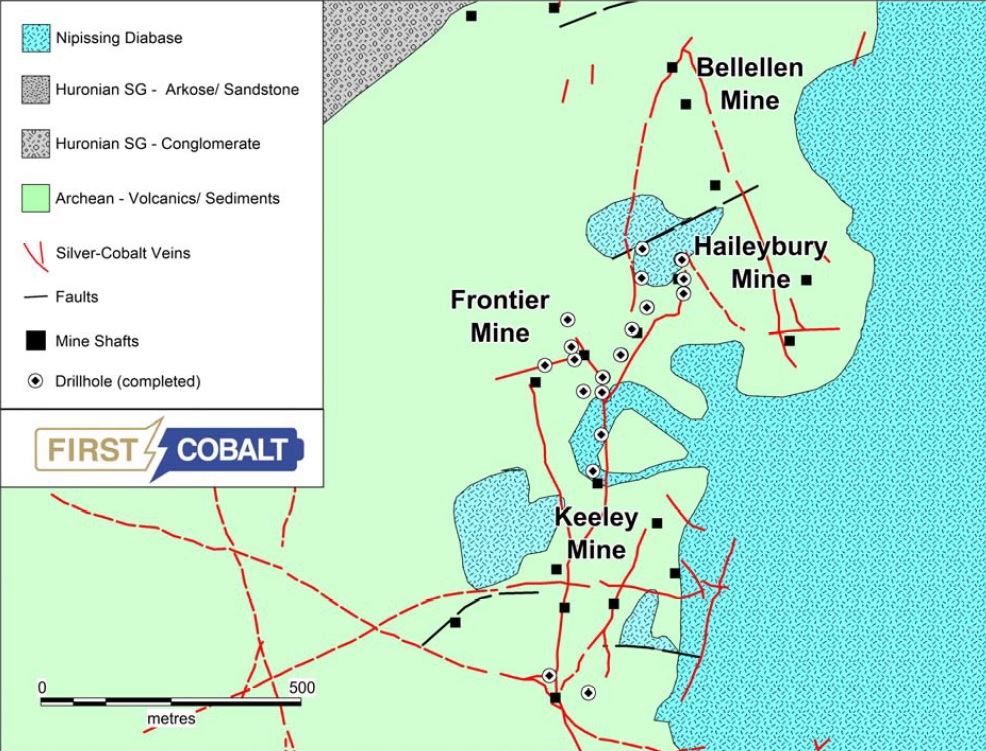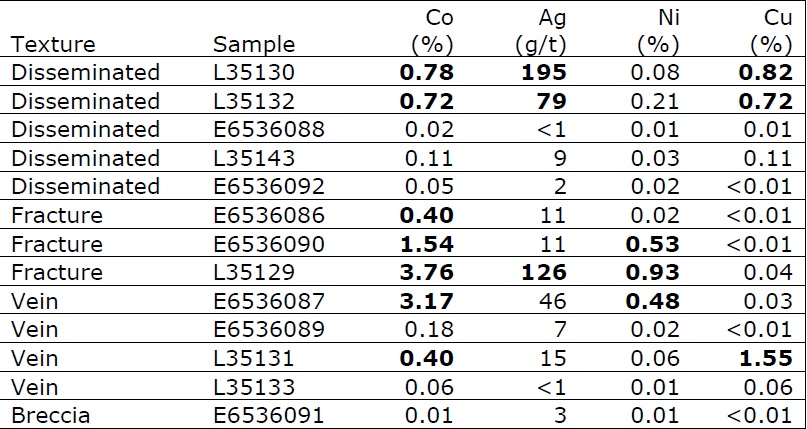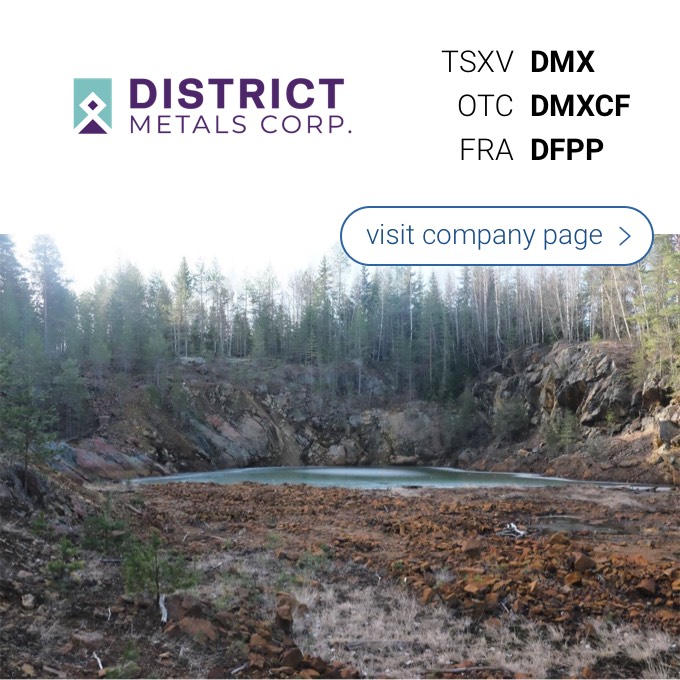
First Cobalt (FCC.V) has released the assay results from a bunch of samples taken from the muck piles at the Bellellen mine which was in production from 1909 until 1943. What’s interesting is the comment from Frank Santaguida, the company’s VP Exploration. He mentions the Bellellen mineralization is different from the Keeley-Frontier mineralization.
This does change the exploration theory as the assayed samples had a much higher average grade than expected (the company originally thought the waste piles wouldn’t contain any meaningful cobalt grades), which could indicate the existence of a ‘more complex structural hydrothermal setting’.

Meanwhile, the company has already completed 4,000 meters of drilling in the Keeley-Frontier area and according to the preliminary update, the company’s drill holes have ‘successfully intersected the targeted hanging wall and footwall rocks of historic mining operations’. That’s very encouraging, but the proof will be in the pudding, and we’re looking forward to see the first exploration results.
As First Cobalt has decided not to pursue the acquisition of cobalt projects in the DRC, all eyes will be on its Canadian Cobalt mining camp. We are preparing a more in-depth overview of the company’s projects and plans, and will release a full report shortly.
Go to First Cobalt’s website
The author has a long position in First Cobalt. First Cobalt is a sponsor of the website. Please read the disclaimer

